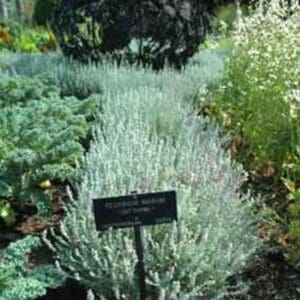5 Summer Organic Gardening Tips

Now that the warmer weather is upon us, that can mean only one thing to gardeners – it’s gardening time! May is planting time and June and July are when we maintain our new seedlings which grow into healthy adult plants.
Remember the diagram of the garden you drew when you prepped your garden in March/April (How To Prep Your Spring Garden)? Let’s break it out and begin to sow new seedlings according to the diagram.
When planning your garden consider companion planting. For instance, plant cucumbers and beans together to repel cucumber beetles and to prevent the wilt diseases they carry. Cucurbita lagenaria or bottle gourds are also great trap plants for cucumber beetles. Or to save those precious tomatoes from caterpillars, plant marigolds they repel the caterpillars. Additionally marigolds have the added benefit of their beautiful ornamental color and is an edible flower (to read more about edible flowers see our article: Indulge in Summer’s Edible Organic Flowers). Marigolds are delicious in salads or as garnishment to vegetables. When planting tomatoes, choose heirloom tomatoes as they have more flavor and nutrients than the commercial varieties. Over the years, commercial companies produced varieties of tomatoes that look pretty and last longer. However in the process they gave birth to a tasteless and nutritionally deficient tomato.
Make your gardening space more efficient by planting beans with corn as corn makes an excellent bean pole. Plant the beans after the corn is six inches tall or the beans will outgrow the corn. To fill in small planting areas, use heat tolerant lettuce or spinach. If the weather is hot, store spinach and lettuce seeds in the refrigerator before planting so they will germinate quickly in hot weather. Spinach and lettuce seeds like the cold. In the mid west these seeds are planted while the ground is cold and snow is still on the ground in late April or early May. Therefore, by putting your seeds in the refrigerator you are mimicking nature.
Remember the flowers; they dress up any garden with splashes of color and fragrance. Some fragrant varieties to consider are star jasmine, roses, gardenia, mock orange and citrus. To brighten shady areas plant begonias, or impatiens. For late summer color, tuberous begonias, cannas, gladioli, montbretias, and tigridias are great ideas. Be creative and have fun. Don’t worry about making mistakes, enjoy experimenting. If you aren’t sure what to plant, survey the locations where you are going to plant. Are they in full sun or part shade, how much water will be needed, how much time are you willing to put into care? Make notes and talk to your local nursery, they will guide you in the right direction.
5 Helpful Hints and Tips for June and July:
- Use orange peels to get rid of aphids. Aphids love them but orange peels don’t love aphids. Orange peels kill aphids. Simply put the orange peels around the effected areas. For example, if you have roses, tear the peel slightly, not all the way through, and attach the peel to a stem near the infected area using the tear. In a matter of hours the aphids are gone.
- If your acid loving plants like azaleas, and gardenias have yellow leaves but the center stem is green they probably need more iron. Chelated iron is the best as chelating transforms the iron in the soil so plants can absorb it.
- Mulch, mulch, mulch. How many times have you heard that? Mulching your garden with grass clippings and leaves throughout the summer is essential. It conserves water by keeping the soil moist and preventing it from cracking during hot summer days, prevents weeds, encourages earthworms, moderates soil tempderature for optimum root growth, and improves the soil as it decomposes. A layer of 2 to 4 inches of mulch decreases evaporation by 70%! Yes 70%. Before mulching, water first so that the mulch will preserve the moisture. If you mulch before watering the mulch will keep the soil dry instead of preserving moisture.
- Be sure to fertilize throughout the summer with your favorite organic fertilizer. Remember organic fertilizers enhance the soil instead of depleting it like synthetic fertilizers. A recipe for a great “garden tea” fertilizer solution for general garden use is one tablespoon fish emulsion, one-half teaspoon seaweed or kelp, and one gallon water. Mix all the ingredients and spray this onto leaves, and water vegetables, ornamentals, trees and vines every two weeks throughout the growing season. It will help increase plant vigor and reduce insect damage. When applied later in the fall, it will help plants prepare for cold weather.
- Add compost to your soil to further enhance the nutrients in the ground. Happy organic gardening! For any questions or comments e-mail me at: [email protected] .

